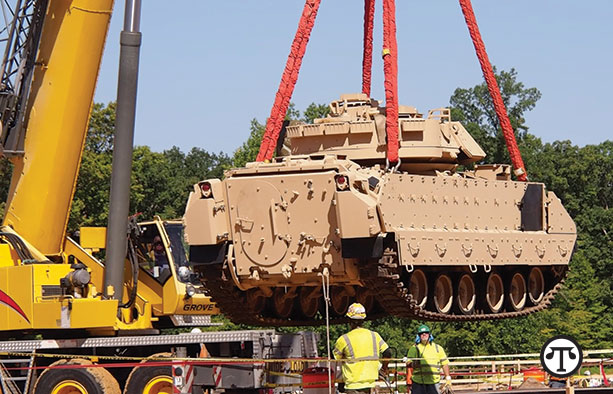
Historic artifacts soon to be displayed at Army’s National Museum near Washington, D.C.
(NAPSI)—The National Museum of the United States Army is under construction, and four artifacts are already in place. These unique pieces of Army history are so large that crews pre-positioned them early in the construction process so the Museum’s walls could be built around them.
The first two artifacts were the M3 Bradley Cavalry Fighting Vehicle that led the 2003 charge from Kuwait to Baghdad, and the M4A3E2 Sherman “Jumbo” Tank, known as “Cobra King,” which was the first tank to break through German lines during World War II’s Battle of the Bulge. Crews then installed an LCVP, one of the few remaining Higgins boats certified to have carried troops ashore at Normandy on D-Day.
The fourth artifact, a Renault FT-17 Tank known as “5 of Hearts,” made history in World War I when it led an attack on enemy lines near Exermont, France. It is the only known surviving Renault FT-17 Tank used in combat by U.S. personnel.
A World War I Liberty Truck, Korean War-vintage Jeep, and Huey helicopter will be added on later dates.
The Museum’s construction is being funded privately through a campaign led by the Army Historical Foundation, with nearly 158,000 Founding Sponsors to date. The Foundation is also raising funds through the Army Brick Program, which allows individuals and groups to order personalized bricks that will line the Museum’s outdoor pathways. Time is running out to order a brick at armyhistory.org/bricks that will be in place when the Museum opens in late 2019.
The U.S. Army has preserved and restored the artifacts that will be displayed in the Museum, which is being built at Fort Belvoir, just south of Washington, D.C. The Army is the only military service without a national museum dedicated to telling its entire history. For more information, visit armyhistory.org.
